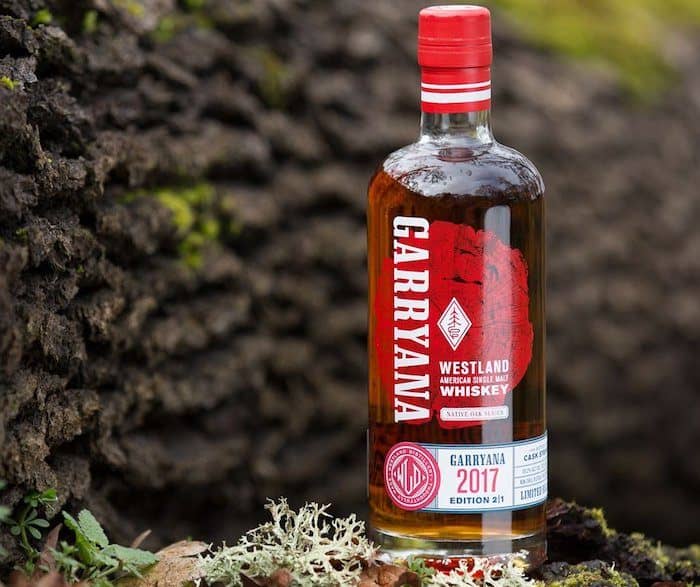In the United States, American oak is the king of whiskey. Sure, there are a few distilleries experimenting with French, Hungarian, or even Russian oak casks, but the vast majority of domestic whiskey production uses barrels made from Quercus alba, an oak indigenous to North America. Its flavor, that distinctive combination of caramel, coconut, and vanilla, is almost synonymous with the flavor of whiskey.
But Quercus alba isn’t our only native oak. The West Coast has several other native oaks, including one—Quercus garryana, also called Oregon oak or Garry oak—that’s seeing growing use as a barrel material in the Northwest distilling industry, where many whiskey producers see it as one way to add that elusive sense of place and terroir to their spirits.
Westland Distillery in Seattle, Washington, is one of Quercus garryana’s most outspoken proponents. Each year, they release a whiskey under their Native Oak line called Garryana that is partially aged in Oregon oak casks. This year, the blend includes 52% pale malt aged in used American oak, 27% five malt (Westland’s specialty malt-heavy mash bill) aged in new American oak, and 21% pale malt aged in Garry oak.
Why isn’t Garryana aged entirely in Oregon oak casks, you might ask? First, it’s hard to find—there’s no commercial Oregon oak forestry industry, and dwindling populations of the tree mean its harvest is tightly restricted. But perhaps that’s alright—according to Matt Hoffman, Westland’s Head Distiller, a little goes a long way. Here’s how he described its flavor profile in a recent phone interview:
“It’s so dynamic. It’s not a subtle thing that fades into the background. In relation to Quercus alba, alba has caramel, vanilla, generic baking spices, coconut, and some woody notes. In Garry oak, it’s all of that stuff, but darker and smokier and sweeter. Instead of caramel it’s molasses, instead of generic baking spice its clove, roasted coffee ground, sometimes an element of dark fruitiness. There’s also a really cool barbecue element to it that I think is just amazing. So it’ has incredible personality to it. It’s different than American oak, and really different from French oak as well, and the flavors are so big you have to learn to work with it. You can’t treat it like alba; you have to treat it like itself.”
If you’re interested in learning more about Westland’s Garry oak project, there’s a lot more information on their website.

Tasting Notes: Westland Garryana 2017, edition 2/1
Vital stats: 100 proof (cask strength), 100% malted barley. No age statement (at least displayed on the sample bottle). 2,600 bottles were released.
Appearance: Light apricot gold
Nose: The first impression is of a rich nuttiness—toasted walnuts and hazelnuts—as well as a pleasant, powdery sweetness. Further nosing reveals some deeper, darker aromas like espresso, dried chili, and prune.
Palate: Chocolate chip banana bread leads off—seemingly a signature note for Westland— topped with lashings of sweet vanilla cream. Yet any pretensions towards pastry are quickly usurped by a firm wave of oak, ushering in a compressed mid-palate that takes a few tastings to loosen. It’s worth the time invested, though, revealing a lovely interplay of black pepper, cinnamon, and clove with lots of roasty malt, baker’s chocolate, and molasses. In the finish, a ghostly sweetness flirts with a curious metallic flavor that almost reads as sanguine.








